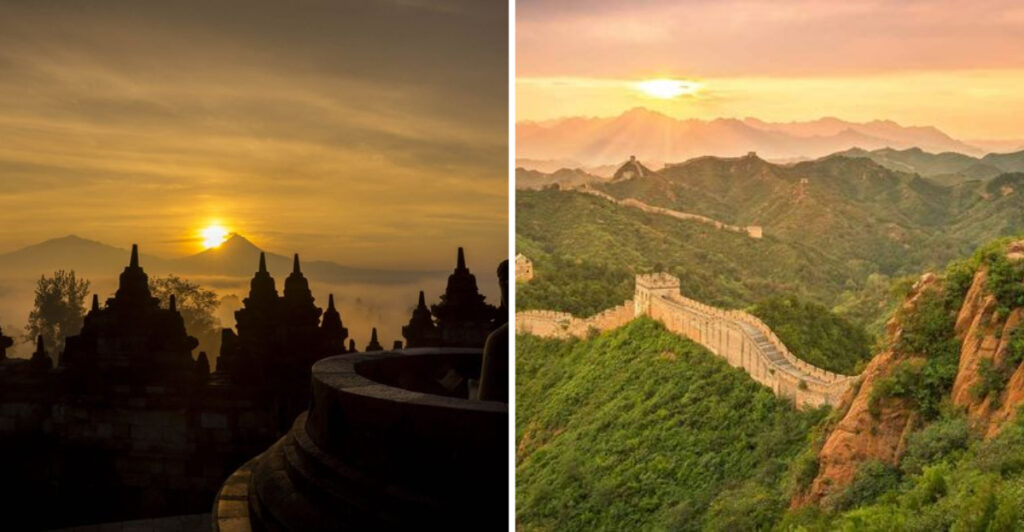Asia, the largest continent, offers a diverse array of attractions that captivate travelers worldwide. From ancient temples to breathtaking natural wonders, Asia’s cultural and historical richness provides endless exploration opportunities. This guide features 20 must-see destinations, each promising a unique experience. Whether you’re drawn to the bustling streets of Tokyo or the tranquil beauty of the Maldives, Asia’s vibrant tapestry awaits discovery. Embrace the adventure and immerse yourself in the continent’s multifaceted charm, where every destination tells a story of its own. Discover the essence of Asia through these iconic landmarks and hidden gems.
1. Great Wall of China
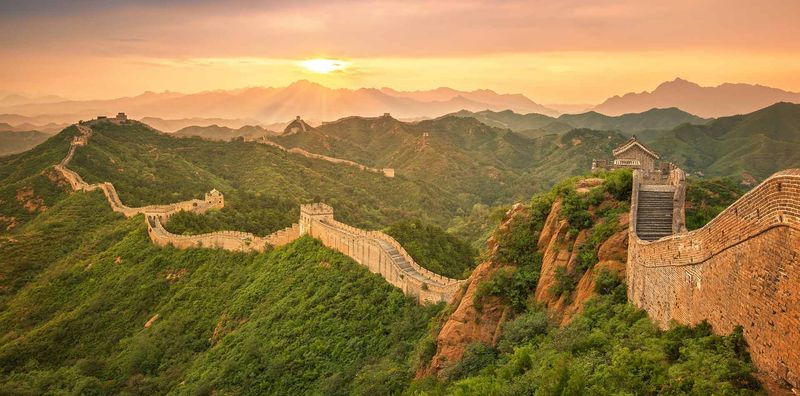
A testament to human ingenuity, the Great Wall of China stretches across northern China, weaving through rugged mountains and verdant valleys. Built over centuries to protect Chinese states from invasions, it stands as a symbol of perseverance. Walking along its ancient stones offers breathtaking vistas and an immersive journey into China’s rich history. It’s a marvel of architecture and a UNESCO World Heritage Site. Did you know? The wall is not a single structure but a series of walls combined. A visit here is both an awe-inspiring and humbling experience.
2. Taj Mahal, India
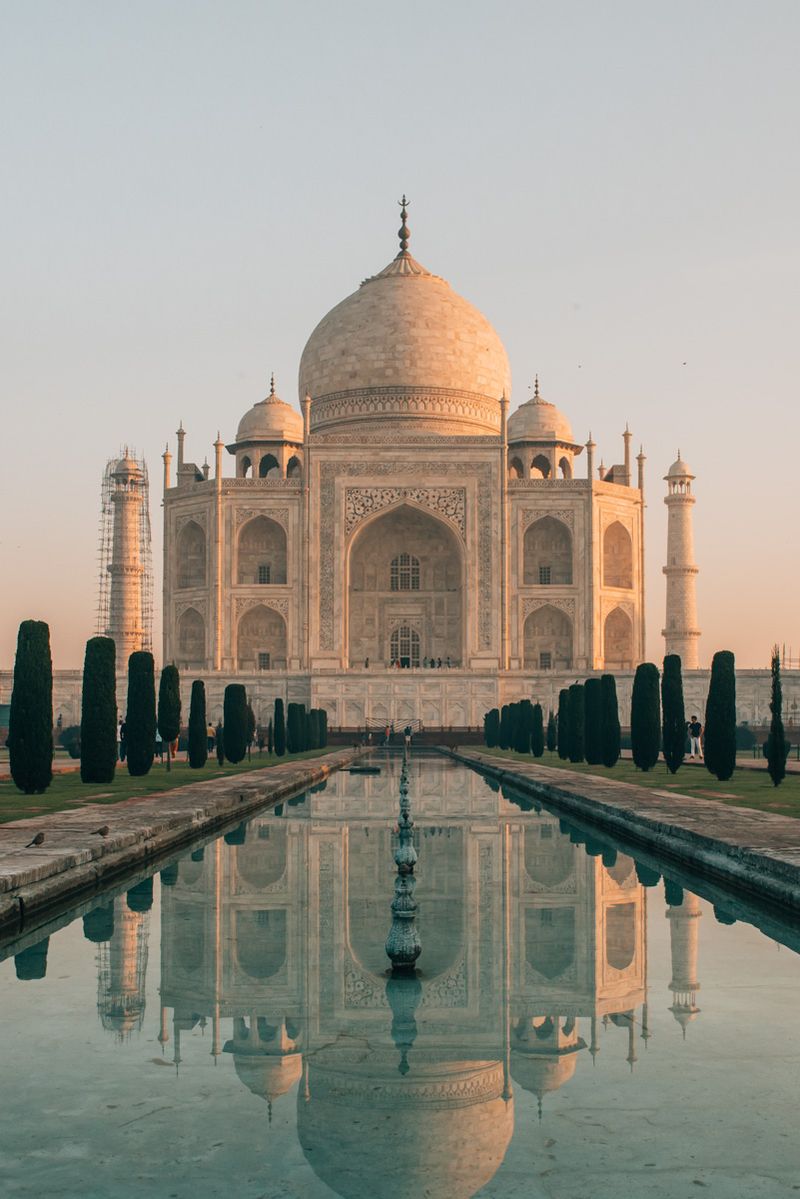
A symbol of love and architectural magnificence, the Taj Mahal in Agra, India, draws millions of visitors annually. Commissioned by Emperor Shah Jahan in memory of his wife Mumtaz Mahal, its stunning white marble façade reflects hues of pink, orange, and gold at sunrise. The intricate inlay work and majestic gardens create an atmosphere of serene beauty. The Taj Mahal stands as a UNESCO World Heritage Site and is regarded as one of the New Seven Wonders of the World. Its timeless allure continues to enchant all who visit.
3. Mount Fuji, Japan
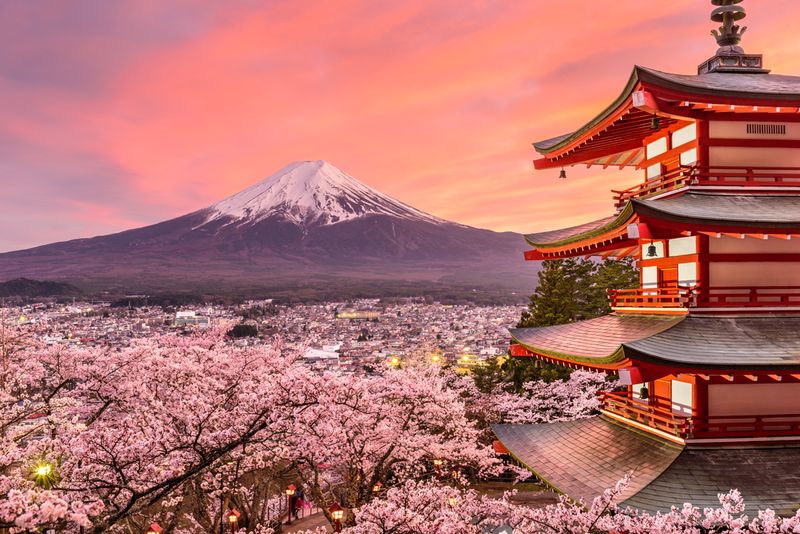
Rising gracefully above the landscape, Mount Fuji is Japan’s iconic symbol of natural beauty. The nearly perfect volcanic cone has inspired artists and poets for centuries. Hiking to its summit is a spiritual journey for many, offering panoramic views that are simply breathtaking. During cherry blossom season, the juxtaposition of blooms against the snow-capped peak creates a scene of ethereal beauty. Mount Fuji is not only a natural wonder but also a cultural icon, deeply embedded in Japanese tradition and art.
4. Angkor Wat, Cambodia
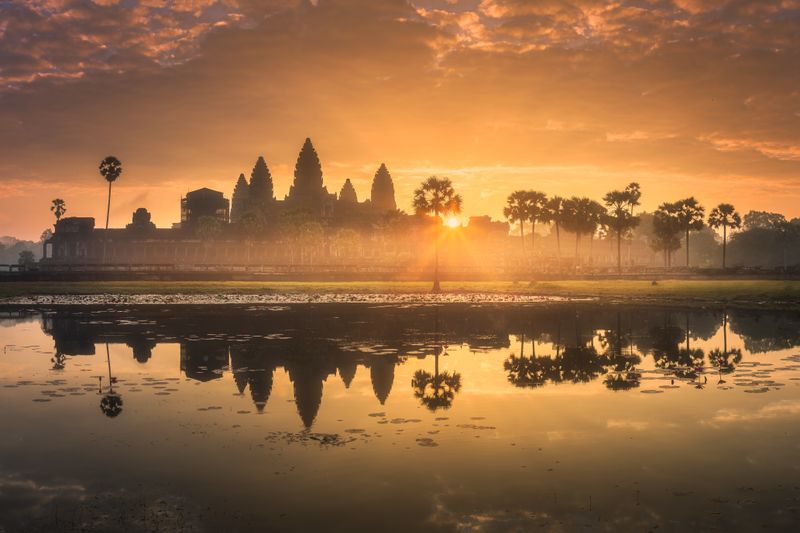
Angkor Wat is a magnificent testament to the Khmer Empire’s architectural prowess and spiritual dedication. This sprawling temple complex in Cambodia is renowned for its stunning bas-reliefs and celestial motifs. As the sun rises, its towers silhouette against the sky, casting reflective glows in the tranquil moat. Originally a Hindu temple, it gradually transformed into a Buddhist site, embodying centuries of religious history. Its grandeur and intricate detailing continue to captivate historians, architects, and travelers alike.
5. Halong Bay, Vietnam
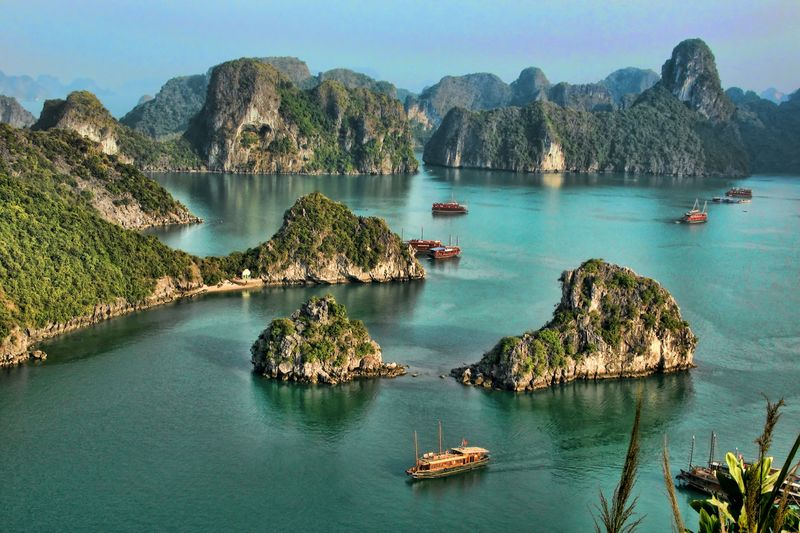
With its emerald waters and towering limestone islands, Halong Bay in Vietnam is a natural wonder of unparalleled beauty. This UNESCO World Heritage Site offers an idyllic setting for cruising in traditional wooden junks. The bay’s mystical allure stems from the legends surrounding its formation, believed to be the result of dragons protecting Vietnam from invaders. Whether exploring hidden caves or kayaking through serene waters, Halong Bay offers a tranquil escape into nature’s masterpiece.
6. Petra, Jordan
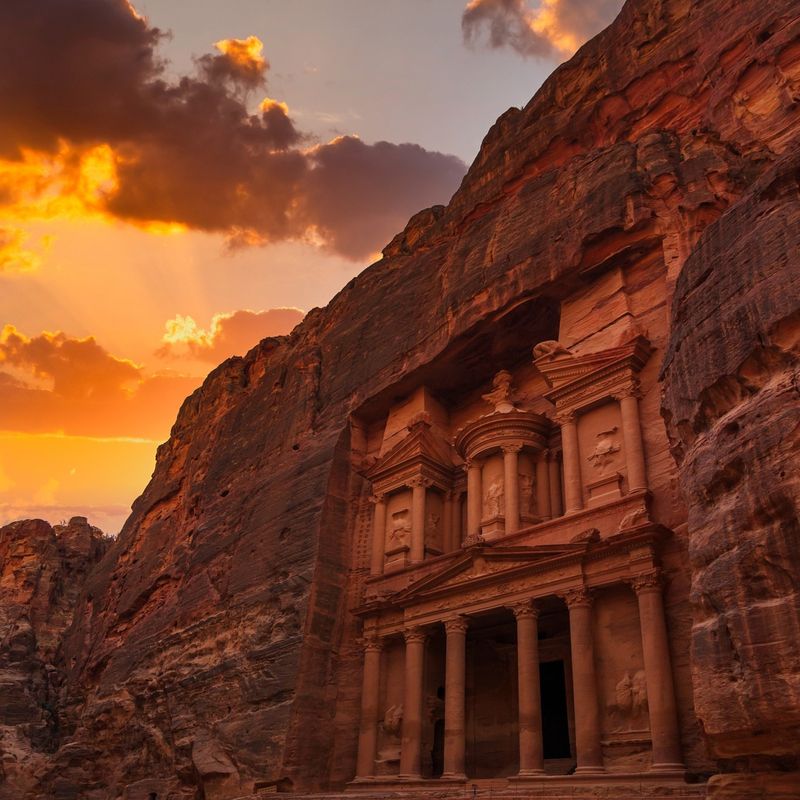
Among the sands of Jordan lies Petra, an ancient city carved into rose-red cliffs. Known as the “Rose City,” Petra’s architectural wonder is epitomized by the Treasury, an ornate façade carved directly into the rock face. Once a thriving trade hub, Petra is now a UNESCO World Heritage Site, captivating historians and adventurers alike. Walking through its narrow canyons, visitors uncover centuries of history and cultural exchange. Petra’s beauty and mystery make it a must-see destination, leaving all who visit in awe.
7. Borobudur, Indonesia
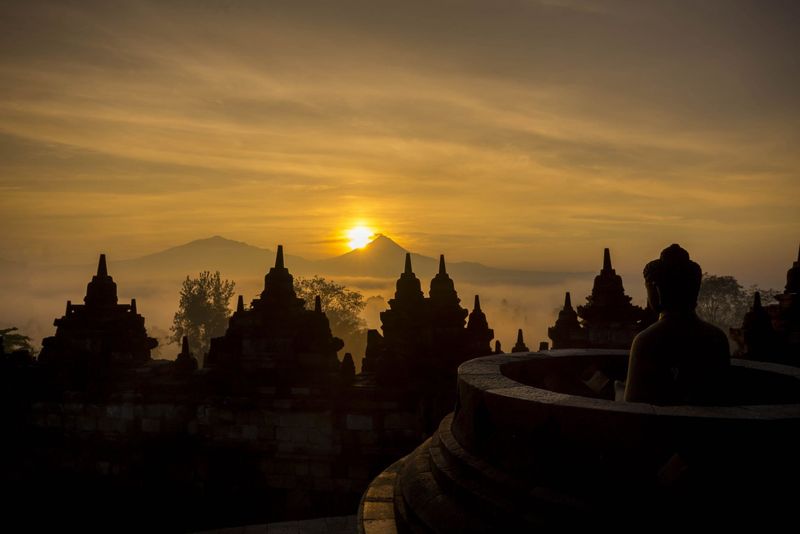
Borobudur, the world’s largest Buddhist temple, stands majestically amidst the lush landscapes of Java, Indonesia. This 9th-century marvel is adorned with intricate stone carvings and a multitude of stupas. As the sun rises, the temple’s silhouette emerges against a backdrop of distant volcanoes, creating a serene and spiritual ambiance. Built as a pilgrimage site, Borobudur remains a testament to Indonesia’s rich cultural and religious heritage, drawing visitors from around the globe to its sacred grounds.
8. Burj Khalifa, UAE

Dominating Dubai’s skyline, the Burj Khalifa stands as the world’s tallest building, a beacon of modern engineering and architectural innovation. Its sleek design and staggering height offer panoramic views of the sprawling city below. At night, the tower illuminates with dazzling LED displays, captivating all who witness it. Visitors can ascend to the observation deck for a breathtaking perspective of Dubai’s futuristic landscape. The Burj Khalifa embodies the city’s aspirations and achievements, symbolizing a fusion of tradition and modernity.
9. Mekong Delta, Vietnam
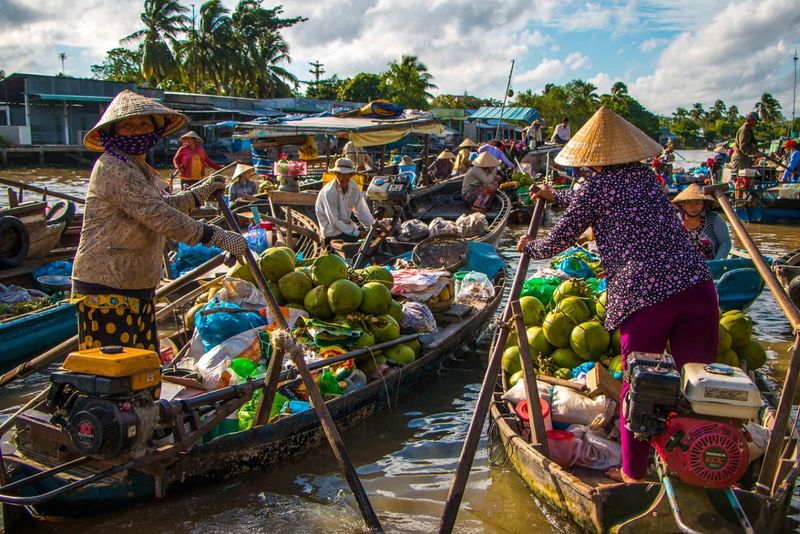
The Mekong Delta, a lush maze of rivers and swamps, is the heart of Vietnam’s agricultural landscape. Known for its vibrant floating markets, visitors can experience the local culture and taste exotic fruits. The delta’s rich biodiversity is home to rare wildlife and verdant scenery. Cruising through the waterways reveals everyday life on the river, where communities thrive amidst the lush environment. The Mekong Delta offers an immersive journey into the rhythms of Vietnamese life and the natural beauty of Southeast Asia.
10. Maldives Islands
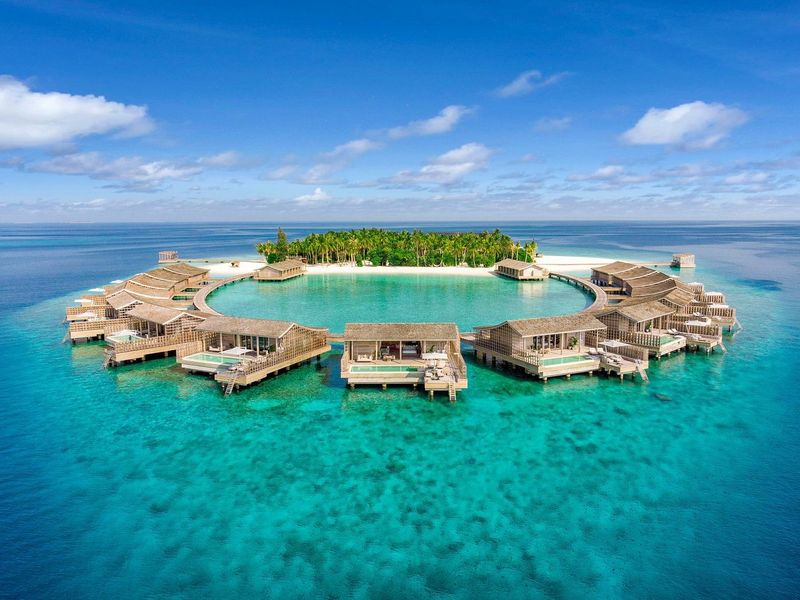
The Maldives, a tropical paradise, captivates with its stunning turquoise waters and pristine white-sand beaches. Famous for luxury resorts and overwater bungalows, it’s a haven for honeymooners and divers. The vibrant coral reefs teem with marine life, offering unparalleled snorkeling and diving experiences. As the sun sets, the islands’ beauty is illuminated by the soft glow of lanterns reflecting on the water. The Maldives promises an escape into tranquility, with its serene landscapes and enchanting underwater world.
11. Gobi Desert, Mongolia
Stretching across northern China and southern Mongolia, the Gobi Desert is a vast expanse of rugged beauty. This arid landscape of dunes and gravel plains offers a unique adventure for the intrepid traveler. Famous for its paleontological discoveries, the Gobi is home to ancient dinosaur fossils. Explore the wild terrain by camel, experiencing the nomadic traditions that have thrived here for centuries. The desert’s stark beauty and endless horizons provide a sense of solitude and wonder in this remote part of Asia.
12. Kyoto’s Temples, Japan
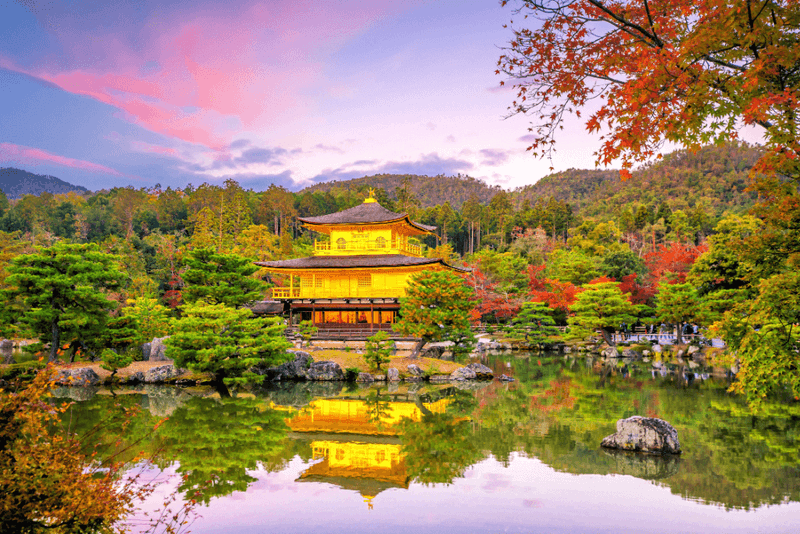
Kyoto, Japan’s cultural heart, is renowned for its historic temples and serene gardens. The city is home to over a thousand temples, each offering a unique glimpse into Japan’s spiritual heritage. In autumn, vibrant foliage enhances the tranquil beauty of sites like Kinkaku-ji and Ryoan-ji. Visitors can stroll through meticulously maintained gardens, experiencing the harmony between nature and architecture. Kyoto’s temples are a testament to the city’s rich history and the enduring allure of Zen Buddhism.
13. Palawan, Philippines
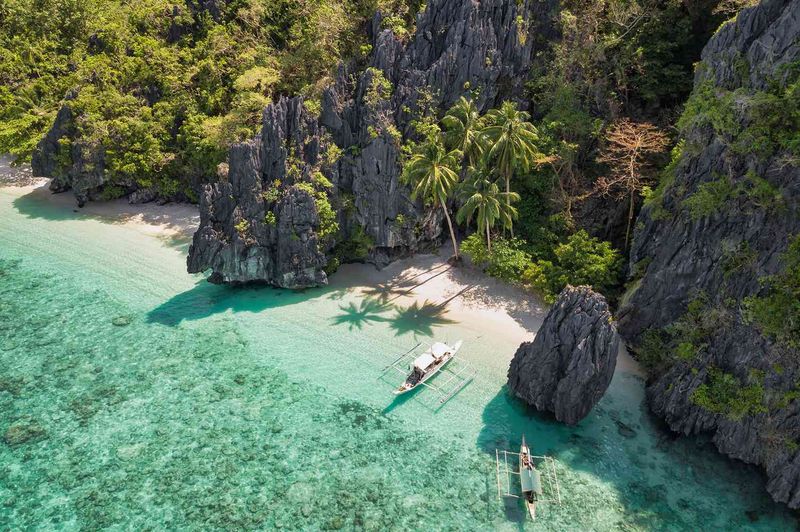
Palawan, often hailed as the Philippines’ last frontier, is a paradise of tropical beauty. Its dramatic limestone cliffs and crystal-clear lagoons invite exploration and adventure. Whether snorkeling in the vibrant waters or relaxing on palm-fringed beaches, Palawan offers a slice of untouched serenity. The island’s rich biodiversity, including rare marine life and lush rainforests, captivates nature lovers. Palawan’s pristine landscapes and tranquil charm make it a must-see destination for those seeking unspoiled natural beauty.
14. Bhutan’s Monasteries
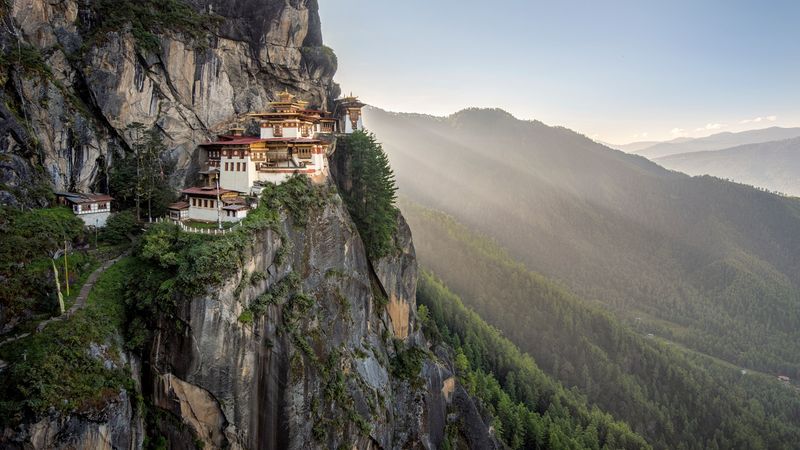
In the mystical lands of Bhutan, monasteries cling to cliffs and perch amid the clouds. These spiritual sanctuaries offer a glimpse into the kingdom’s unique Buddhist culture. The famed Paro Taktsang, or Tiger’s Nest, is a pilgrimage site for many, nestled dramatically on a cliffside. The journey to these monasteries is as enlightening as the destinations themselves, winding through scenic trails and offering breathtaking vistas. Bhutan’s monasteries embody the peace and spiritual richness that define this Himalayan kingdom.
15. Bali’s Rice Terraces, Indonesia
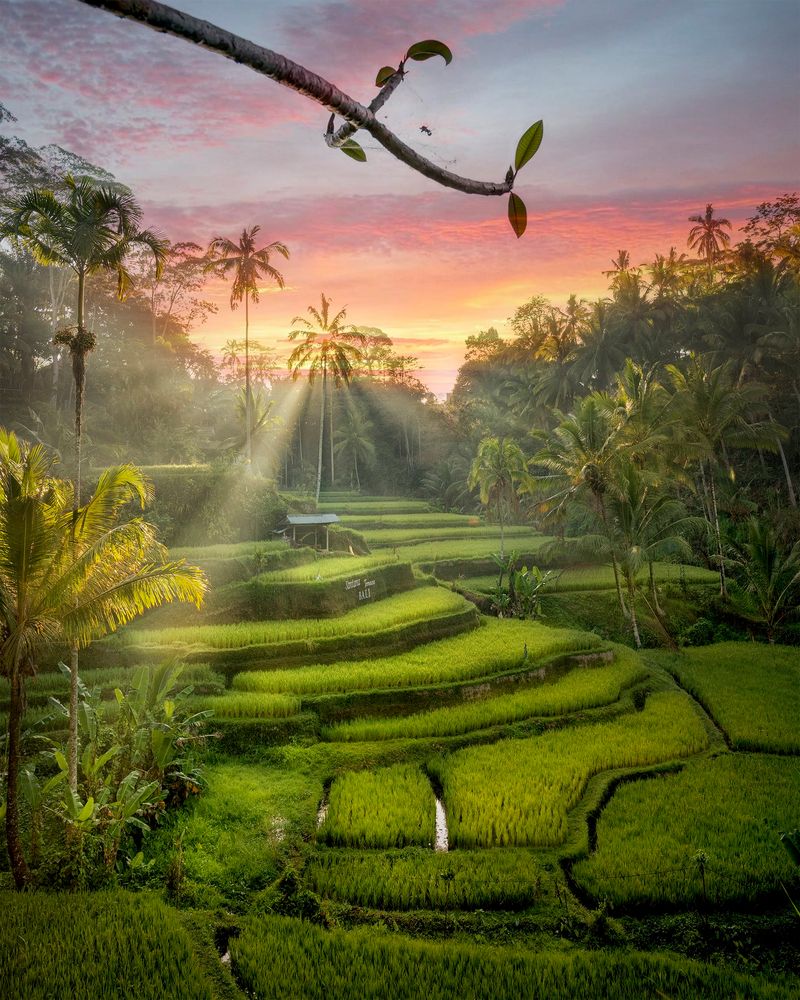
Bali’s rice terraces, particularly in Ubud, showcase the island’s agricultural artistry and natural beauty. These verdant fields, carved into the hillsides, reflect Indonesia’s rich farming traditions. The terraces create a stunning landscape, especially at sunset, when the fields glow with golden light. Farmers maintain these historic terraces using traditional methods, preserving Bali’s cultural heritage. Visitors can wander through the fields, witnessing the harmonious relationship between humans and nature. Bali’s rice terraces offer a peaceful retreat and a glimpse into local life.
16. Forbidden City, China
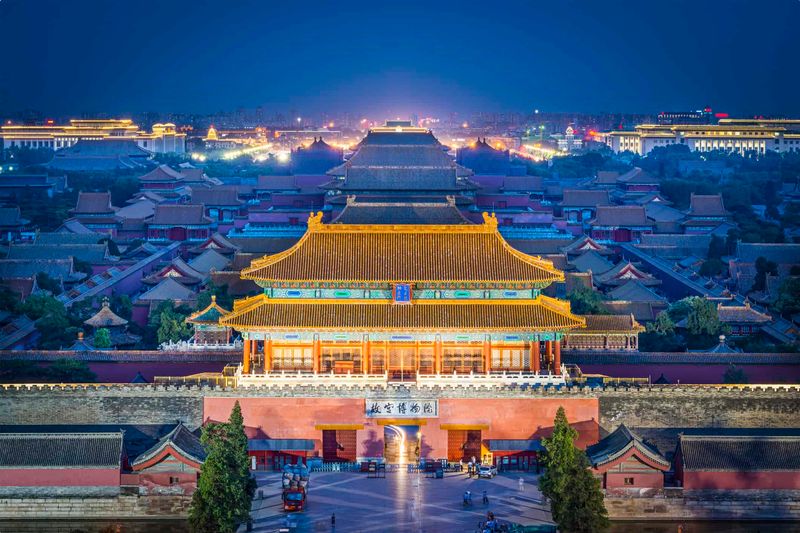
In the heart of Beijing lies the Forbidden City, a sprawling imperial palace complex that once housed China’s emperors. Boasting over 9,000 rooms, this UNESCO World Heritage Site is a masterpiece of traditional Chinese architecture. Visitors can explore its vast courtyards and intricately detailed halls, each telling stories of imperial intrigue and grandeur. The palace’s red walls and golden roofs create a striking visual backdrop, embodying centuries of Chinese history and culture. The Forbidden City remains a symbol of China’s enduring past and artistic achievements.
17. Jeju Island, South Korea
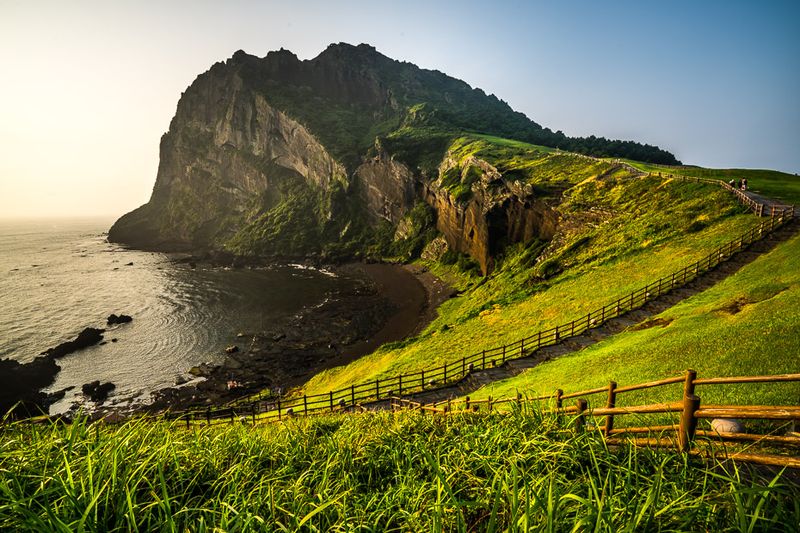
Jeju Island, a volcanic gem off South Korea’s coast, offers diverse landscapes and natural wonders. From the iconic Seongsan Ilchulbong Peak to the lush Hallasan National Park, Jeju’s beauty is unparalleled. The island’s serene beaches and dramatic waterfalls provide a peaceful escape from urban life. Jeju’s rich cultural tapestry includes unique culinary delights and traditional practices. Whether hiking through its verdant trails or relaxing on the sandy shores, Jeju Island promises an unforgettable journey into nature’s splendor.
18. Sri Lanka’s Sigiriya
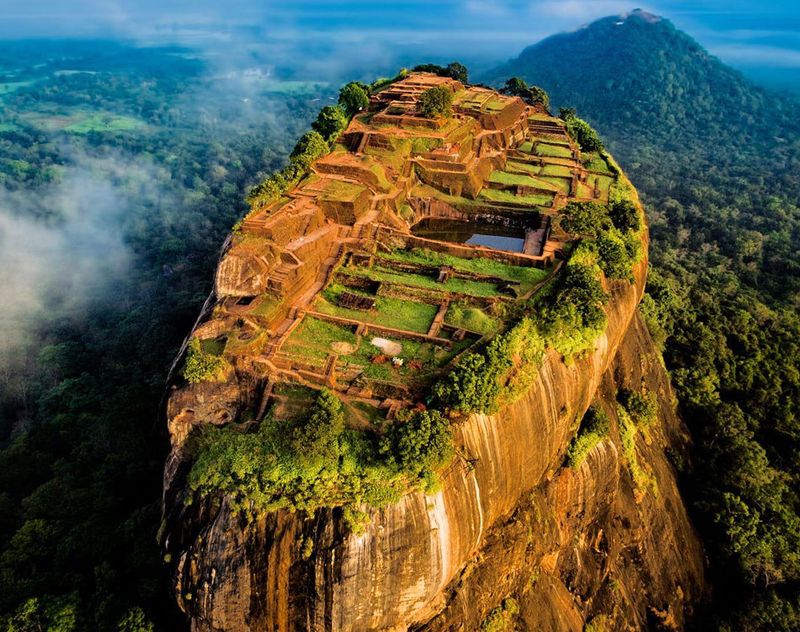
Sigiriya, a majestic rock fortress in Sri Lanka, rises dramatically from the surrounding plain. Known as the “Lion Rock,” it features ancient frescoes and well-preserved gardens that reflect the ingenuity of its creators. The climb to the summit rewards visitors with panoramic views and a sense of awe at the engineering marvels. Sigiriya’s blend of natural beauty and historical significance captivates all who visit, offering insight into Sri Lanka’s rich cultural heritage. The site stands as a testament to the island’s ancient civilizations and artistic achievements.
19. Bukhara, Uzbekistan
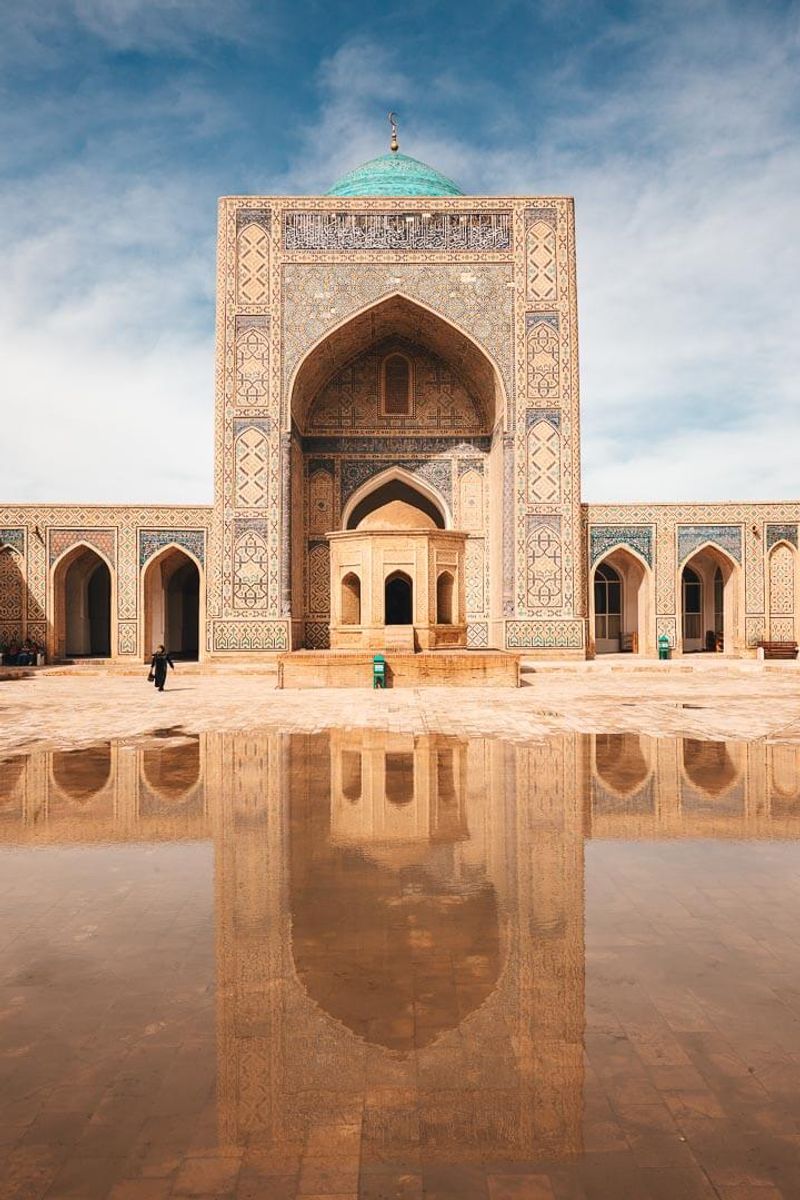
Bukhara, a historic city in Uzbekistan, offers a glimpse into the Silk Road’s vibrant past. Its enchanting cityscape is dotted with centuries-old mosques, minarets, and bustling bazaars. The architectural beauty of sites like the Kalyan Minaret and Lyab-i Hauz complex captivates visitors, showcasing Islamic artistry and craftsmanship. Bukhara’s labyrinthine streets invite exploration, where history echoes in every corner. As a UNESCO World Heritage Site, Bukhara preserves the legacy of a bygone era, promising a journey through time and culture.
20. Karakoram Highway, Pakistan/China
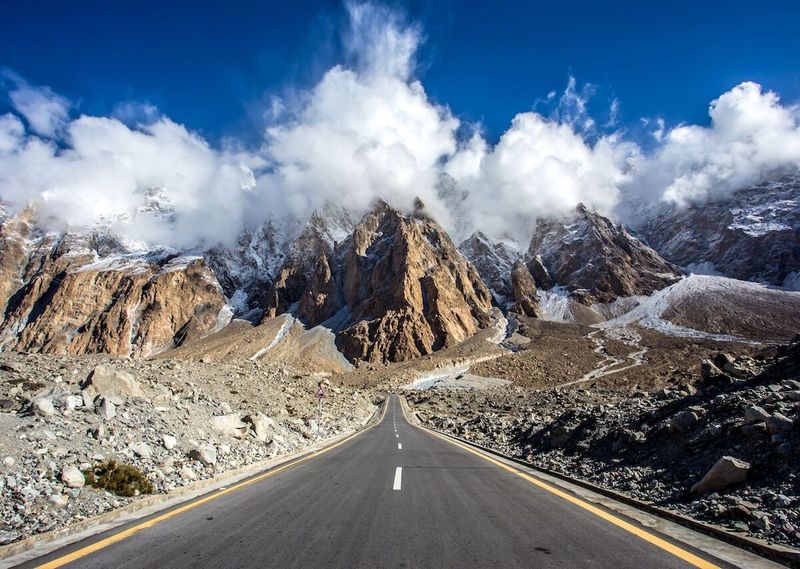
The Karakoram Highway, connecting Pakistan and China, is one of the world’s highest paved roads, offering a breathtaking journey through the rugged Karakoram Range. This engineering marvel traverses dramatic landscapes, with towering peaks and deep valleys. The highway is a gateway to adventures and cultural exchanges, linking remote communities and offering stunning vistas at every turn. Travelers along the Karakoram Highway are treated to unparalleled beauty and a sense of adventure, as they traverse one of Asia’s most iconic routes.

